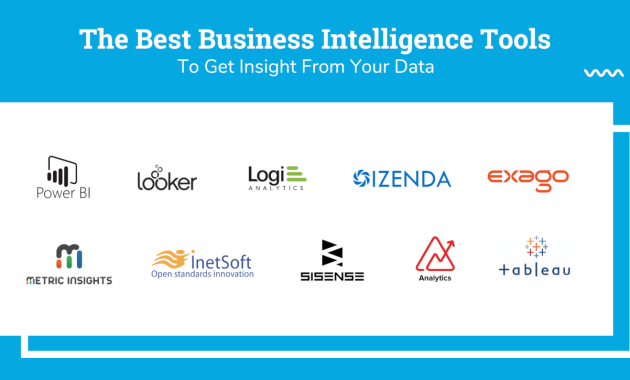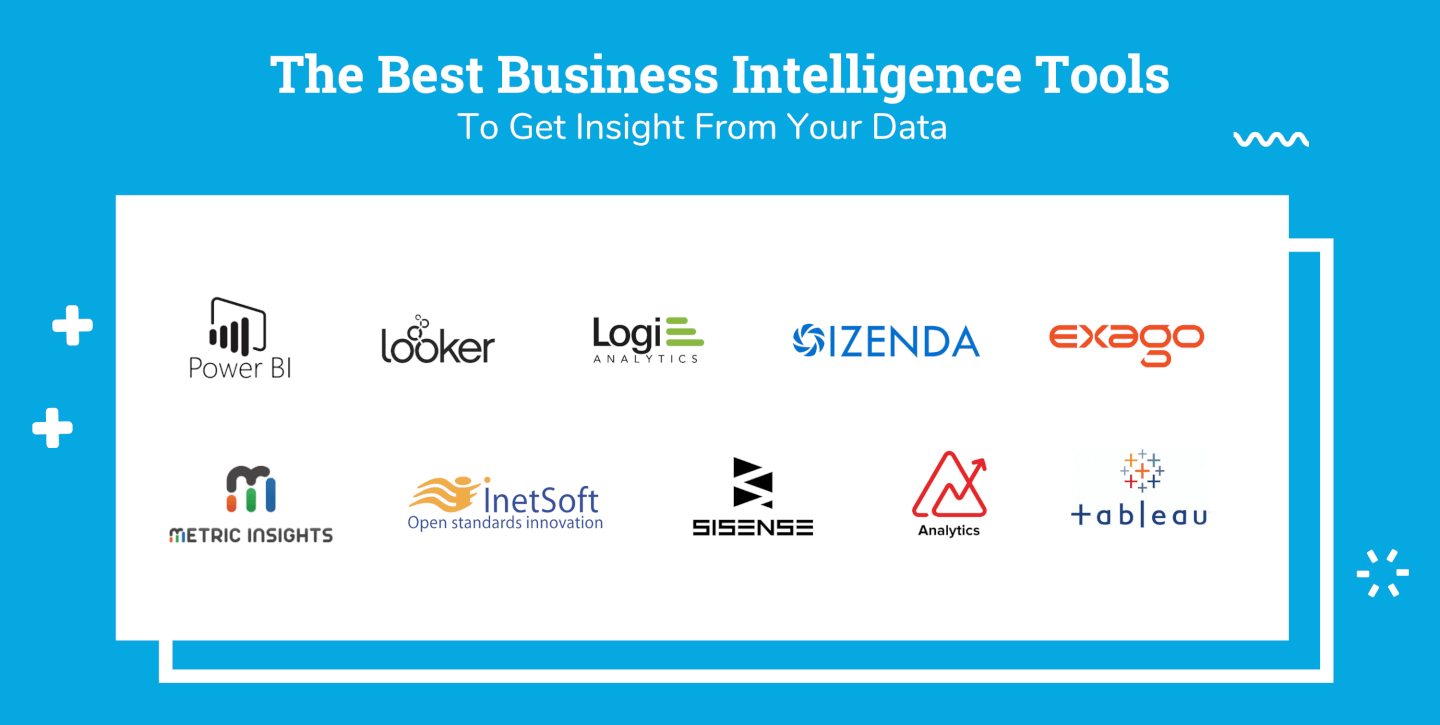
Unlocking Warehouse Efficiency: Exploring the Best Business Intelligence Tools for Warehousing
In the fast-paced world of supply chain management, warehousing stands as a critical link. It’s where goods are stored, managed, and prepared for distribution. However, without the right tools, warehouses can quickly become bottlenecks. Businesses increasingly rely on data to optimize their operations. This is where Business Intelligence (BI) tools come into play. They offer powerful insights. These insights help warehouse managers make informed decisions. This article delves into the best business intelligence tools for warehousing. It explores their features and benefits.
The Importance of Data-Driven Warehousing
The modern warehouse generates a massive amount of data. This data encompasses everything from inventory levels to order fulfillment times. Analyzing this data manually is inefficient and prone to error. BI tools offer automated solutions. They collect, analyze, and visualize data. This data helps identify trends, predict demand, and optimize processes. This is crucial for improving efficiency and reducing costs. Data-driven decision-making is no longer a luxury. It’s a necessity for warehouses looking to stay competitive.
Key Features to Look for in Business Intelligence Tools
Choosing the right BI tool is essential. Several key features distinguish effective tools. These features can significantly impact warehouse performance.
- Data Integration: The ability to connect to various data sources is paramount. This includes warehouse management systems (WMS), enterprise resource planning (ERP) systems, and other relevant databases.
- Data Visualization: Clear and intuitive dashboards and reports are crucial. These visualizations make it easy to understand complex data.
- Real-time Analytics: The capability to analyze data in real-time allows for immediate responses. This is important for addressing issues.
- Predictive Analytics: Forecasting future trends helps with inventory planning and resource allocation.
- Customization: The ability to tailor reports and dashboards to specific warehouse needs is essential.
- Scalability: The tool should be able to handle growing data volumes. This ensures continued performance as the warehouse expands.
Top Business Intelligence Tools for Warehousing
Several BI tools excel in the warehousing sector. Each tool offers unique strengths. The best choice depends on specific needs and budget.
Tableau
Tableau is a widely recognized leader in the BI space. Its intuitive interface and powerful visualization capabilities make it a favorite. Tableau excels in creating interactive dashboards. These dashboards provide a clear overview of warehouse performance. It can integrate with many data sources. This integration is key for comprehensive analysis. Tableau’s ease of use makes it suitable for both technical and non-technical users. It empowers warehouse managers to explore data effectively. This leads to better decisions. It’s a robust business intelligence tool for warehousing.
Microsoft Power BI
Microsoft Power BI offers a comprehensive suite of BI features. It is a cost-effective solution. Power BI integrates seamlessly with other Microsoft products. This makes it easy to connect to various data sources. Its user-friendly interface and drag-and-drop functionality simplify data analysis. Power BI provides a wide range of visualization options. It offers powerful data modeling capabilities. This makes it ideal for complex warehouse environments. This is a great business intelligence tool for warehousing.
Qlik Sense
Qlik Sense is known for its associative data modeling. This allows users to explore data from any angle. It uncovers hidden insights. Qlik Sense offers a visually appealing interface. It provides a range of advanced analytical features. These features help optimize warehouse operations. Its focus on data discovery makes it a valuable tool. It is a great asset for business intelligence tools for warehousing. Qlik Sense is also scalable and flexible. This makes it suitable for warehouses of all sizes.
Sisense
Sisense is a platform that focuses on embedded analytics. It is often used by businesses that want to integrate BI into their existing applications. Sisense offers powerful data processing capabilities. This tool is great for large datasets. It provides real-time insights. This helps warehouse managers make quick decisions. It offers advanced analytics features. This includes predictive modeling. Sisense is a good choice for warehouses with complex data needs. The business intelligence tools for warehousing provide a comprehensive solution.
Zoho Analytics
Zoho Analytics is a cloud-based BI platform. It’s designed for ease of use and affordability. It offers a wide range of pre-built connectors. This simplifies data integration. Zoho Analytics provides intuitive dashboards and reporting features. It is suitable for small to medium-sized warehouses. Its user-friendly interface makes it accessible to non-technical users. It provides valuable insights. This helps optimize warehouse operations. It is a valuable business intelligence tool for warehousing. It’s an excellent option for businesses on a budget.
Implementing Business Intelligence in Warehousing
Implementing a BI solution requires a strategic approach. Careful planning is essential for success.
- Define Objectives: Clearly define the goals. Determine what you want to achieve with BI.
- Assess Data Sources: Identify and assess all available data sources. Ensure data quality and accessibility.
- Choose the Right Tool: Select a BI tool that meets your specific needs and budget. Consider features and ease of use.
- Data Integration: Integrate data from various sources into the BI tool. Ensure data accuracy and consistency.
- Dashboard Development: Create customized dashboards. These dashboards should provide key performance indicators (KPIs).
- Training and Adoption: Train warehouse staff on how to use the BI tool. Encourage data-driven decision-making.
- Ongoing Analysis and Optimization: Continuously monitor and analyze data. Make adjustments to optimize warehouse performance.
Benefits of Using Business Intelligence Tools
The advantages of using BI tools in warehousing are numerous. They lead to significant improvements. These improvements are in operational efficiency and profitability.
- Improved Inventory Management: Better inventory forecasting. This reduces stockouts and overstocking.
- Optimized Order Fulfillment: Faster and more accurate order processing. This leads to improved customer satisfaction.
- Reduced Operational Costs: Identifying and eliminating inefficiencies. This reduces labor and storage costs.
- Enhanced Decision-Making: Data-driven insights. This enables better strategic decisions.
- Increased Productivity: Streamlined processes. This improves overall warehouse productivity.
- Better Resource Allocation: Optimize the use of labor. Ensure the best use of equipment.
Challenges and Considerations
While BI tools offer many benefits, there are also challenges. These challenges must be addressed for successful implementation.
- Data Quality: Poor data quality can lead to inaccurate insights.
- Data Security: Protecting sensitive data is essential.
- User Adoption: Getting staff to embrace data-driven decision-making.
- Integration Complexity: Integrating BI tools with existing systems can be complex.
- Cost: The cost of BI tools can be significant.
The Future of Business Intelligence in Warehousing
The future of BI in warehousing is promising. Advancements in technology will further enhance capabilities. Artificial intelligence (AI) and machine learning (ML) are playing a bigger role. They are improving predictive analytics. They are also automating processes. This will lead to even greater efficiency. This will also lead to better decision-making. The integration of IoT devices will provide real-time data. This data will help with operations. This will revolutionize warehouse management. The role of business intelligence tools for warehousing will become even more critical. This is because they will enable warehouses to adapt. They will also help them thrive in a competitive landscape.
Conclusion
Business intelligence tools for warehousing are transforming the way warehouses operate. By leveraging data analytics, warehouses can improve efficiency. They can also reduce costs. They can also enhance customer satisfaction. Choosing the right BI tool and implementing it strategically is key to success. As technology evolves, the role of BI in warehousing will continue to grow. Warehouses that embrace data-driven decision-making will be well-positioned for the future. They will be able to meet the demands of the supply chain.
[See also: Related Article Titles]

